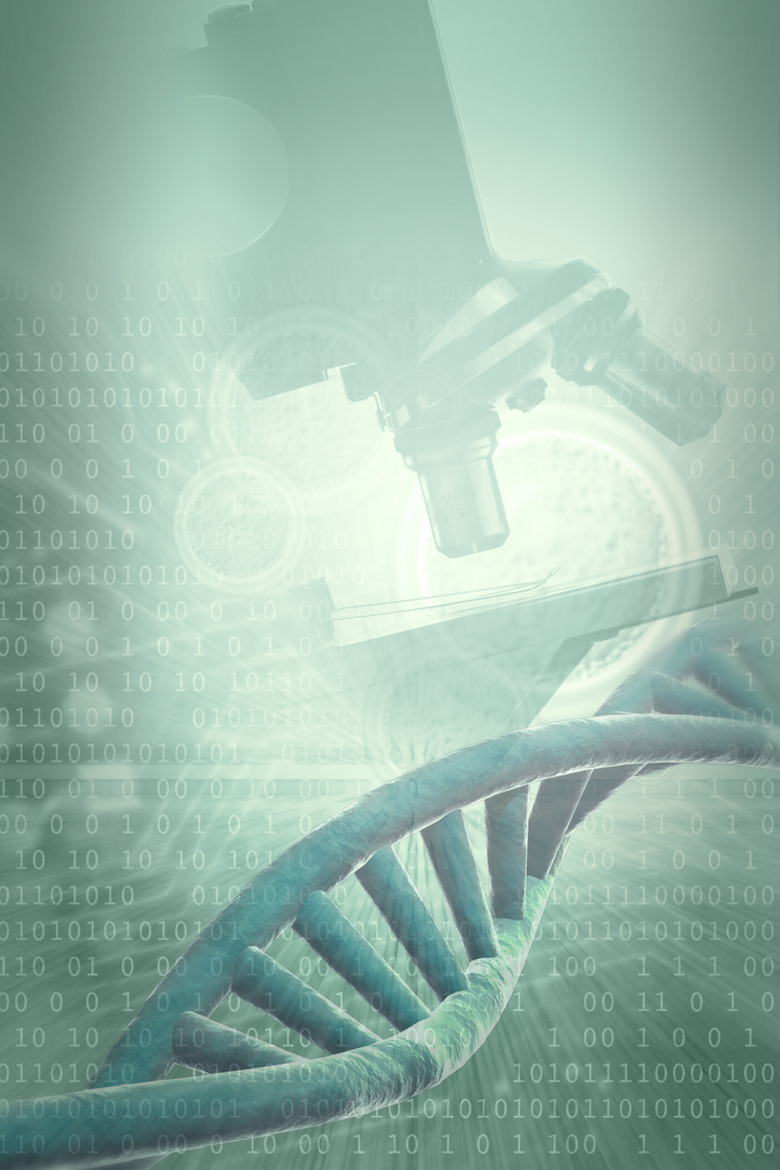What Is A Homologous Allele?
To understand what a homologous allele is, you have to understand what chromosomes, genes and loci are first. The DNA of plants and animals is organized into pairs of chromosomes, which are strings of genes. Genes are bits of DNA that code for specific traits. Loci are the locations on each chromosome where genes are stationed.
Sexy Pairs
Sexy Pairs
Out of all the organisms on Earth, plants and animals are the two groups that usually have paired, or diploid, chromosomes in their body, or somatic, cells. However, the ones that reproduce sexually have a special set of cells known as germ cells, gametes, or eggs and sperm, which are haploid — each cell has only one chromosome of each pair in the total genome. During sexual reproduction these cells combine so that new embryos inherit one chromosome of each pair from each parent.
Infinite Variety
Infinite Variety
Each chromosome has a series of loci that corresponds to its partner's loci. The paired genes in these loci code for specific traits. Each gene has a number of possible variations. These different variations are called alleles. The way a new individual manifests a particular trait depends on the variable forms of each allele it inherits from each parent.
Homologous Means "The Same"
Homologous Means "The Same"
Corresponding loci on each paired chromosome are called homologues. Homologous alleles are the alleles that inhabit these homologous loci. They code for the same trait even if they contain different information. For example, one chromosome may have an allele that codes for blue eye color. The homologous allele on the second chromosome in the pair may code for brown eye color. The actual eye color of the individual with these alleles depends on which are dominant, recessive, co-dominant, or partially dominant.
But Sometimes It's a Little Different
But Sometimes It's a Little Different
When comparing different groups of organisms, alleles that code for similar traits may also be referred to as homologous, even if they don't exist at the same loci or on the same chromosomes. For example, alleles that code for eye color in human beings, parrots, goldfish and fruit flies are all homologous, even though they may be found at very different loci in the different species' genomes.
Cite This Article
MLA
Libal, Angela. "What Is A Homologous Allele?" sciencing.com, https://www.sciencing.com/homologous-allele-41615/. 24 April 2017.
APA
Libal, Angela. (2017, April 24). What Is A Homologous Allele?. sciencing.com. Retrieved from https://www.sciencing.com/homologous-allele-41615/
Chicago
Libal, Angela. What Is A Homologous Allele? last modified March 24, 2022. https://www.sciencing.com/homologous-allele-41615/
